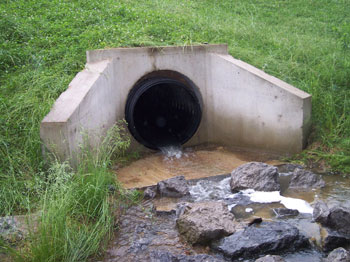The type of culvert also influences the flow capacity. For example, the double or triple-walled HDPE (plastic) culvert with a smooth interior has more flow-carrying capacity than corrugated galvanized metal, which in turn flows better than the more deeply-corragated non-lined HDPE plastic. The slope or “fall” matters, especially if the culvert/ditch has near-minimal fall, and the type of interior surface makes a huge difference in problems with sediment and trash accumulation in the pipe—the smooth HDPE plastic beats ‘em all in this regard.
As SJ 83 pointed out, the headwall is the more important than the tail. We have moved a lot of dirt on the farm, hauling maybe 800-1000 tri-axle loads of fill. Most of that I have spread with. . . my Bobcat 773, believe it or not. As the farm has absolutely no rock at all, I sift rocks of all sizes out of the fill material and stockpile the rock for use in building headwalls. Rather than dumping rip-rap and leaving large gaps and holes, I hand-stack the flatter rocks to build my headwalls, turning some longer rocks here and there lengthwise back into the wall, to keep the wall from toppling. The headwalls I stack are 2-3 ft thick.
I use thin layers of base stone to bed the hand-stacked stones, and for the top courses of stone, dump dry “Sakrete” into the base stone to secure the stones stacked above the diameter of the pipe.
And yes, I always lay a big flat rock, or a piece of scrap sidewalk flat in the bottom directly in front of the culvert inlet--it doesn't have to extend under the pipe.


